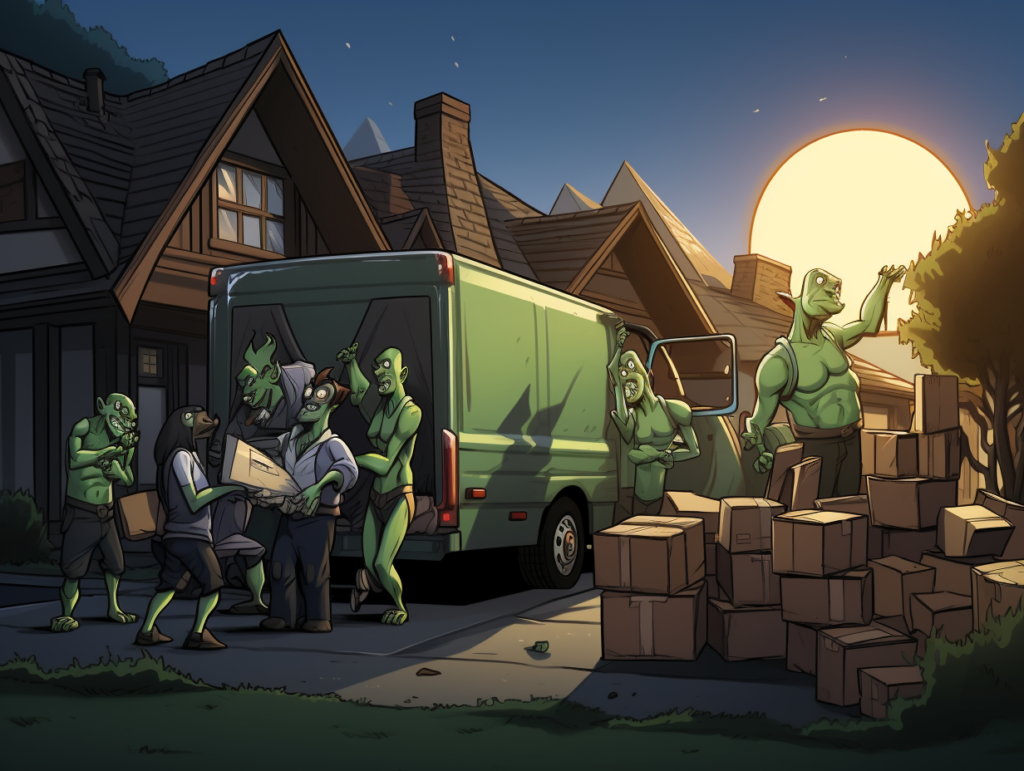I am so confused by all of this. I think I remember reading in the old Advanced Dungeons & Dragons player handbook that once you reached a certain level, you could attract followers and have a class-appropriate lair/castle/whatever that you could run. Your character could retire there, and then you would start a new character.
Because you were done at that point. Adventurers… adventure! NPCs sit around and wait for adventurers to come give meaning to their drab, unexciting existences.
And anyway, this isn’t even the first time D&D has had rules for player-run structures. The fifth edition had the Strongholds & Followers supplement. There was even an official Castles supplement for AD&D second edition. It’s been done.
Then, I read this about the new D&D Bastion system:
Starting at level 5, players will be able to create a Bastion along with their DM. Players can have their own if they want, and even characters without them can benefit from another party member’s Bastion.
The UA gives some examples, such as a Fighter making a fortified stronghold or a Cleric establishing a shine to their diety.
Every seven days of in-game time (or at the DM’s discretion), a Bastion turn occurs. At this point, the player can issue orders and gain rewards from their Bastion. This is also when players will accumulate Bastion Points, which can be used to earn magic items, among other benefits.
Players have a lot of freedom to determine what their Bastion looks like and does. In addition to basic facilities like bedrooms and kitchens, Bastions have special facilities to choose from. The former requires time and money to build, while the latter does not. However, a Bastion can only have a certain number of special facilities based on the player’s level.
dexerto.com
Why?
I don’t know why I am so bothered by this.
But I am.
When I was a kid, just learning D&D, all it took for me to go off in a world of my own was a pencil, a ruler, and a piece of graph paper. D&D was a game about imagination. Graph paper, your character sheet, and a set of cheap plastic dice with the numbers colored in. There were worlds in those things.
Now… now, I dunno. There are rules for how big my house can be. Rules for what things I can have in it. Rules for how many. This costs this much. You want a fountain? Buddy, gain a few levels and then we’ll talk fountains. I can get you a dragon skin doormat — maybe. Lemme make a call.
Back when I was a kid, if you wanted a thieves guild of your own, you found one you liked, challenged the head thief dude to a knife throwing contest and if you won, it’s your thieves guild now! If you lost, well, you misread the rules. It wasn’t a knife-catching contest. Be better.
You want a temple? Do a pray-off with the local vicar. Want that castle? You frickin’ invade that thing.
I don’t know why imagination has to be limited by rules. If I were DMing, and one of my players thought they needed my help to set up the living room in their new hovel, I’d help. I’d roll all the dice, tote up the charges, have the sewer hooked up, cable put in, comfy chairs in the living room. And then every time they left the place to go adventuring, gnomes would move in. Move into the walls. They’d never be able to get them all out.
Whispering to them while they sleep!
Gnomes.
Anyway. Market opportunity. I am right now writing rules to determine how to brew the ingredients for a special brew that will make your armor really shiny. Think epic quest. Sorry, until you’re fifth level, your armor is just going to be a rusty mess, but if you sit down with your DM and bring some coin, maybe we can scrape off some of the rust.
Tipa’s Unearthed Rules for Arcane Armor Cleansing Solutions
1. Beginner’s Blight-Banishing Brew (BBB):
For the fledgling adventurer, this rudimentary solution provides a modest sheen. Requires:
- 1 vial of murky water (from a stagnant pond, preferably)
- 3 silver pieces (the older and more tarnished, the better)
- A tuft of goblin hair
Instructions: Mix ingredients in a tarnished pot and chant the novice’s cleaning incantation, “Scrub-a-dub.” Apply with an old rag, preferably from the cloak of a vanquished foe.
2. Adept’s Alchemical Armor Ablution (AAA):
For the intermediate defender, this formula revives luster. Requires:
- 1 flask of spring water blessed by a druid
- 10 gold pieces
- The wing of a bat and the feather of a goose, representing night and day
Instructions: Under a crescent moon, grind the gold into dust and mix all components in a silver chalice. Recite the chant, “Shine and gleam, make it seem, it’s in a dream.” Rub the mixture with a soft brush made of owlbear fur.
3. Master’s Mystical Metal Mender (MMM):
For the elite crusader, this elixir restores armor to its gleaming peak, almost as if enchanted. Requires:
- 1 decanter of pure mountain runoff, kissed by a snow nymph
- Gemstones worth 100 gold pieces, representing the sun’s brilliance
- A single scale of a young dragon
- The whisper of a wind elemental, captured in a jar
Instructions: Combine the water and ground gemstones in a mithril bowl. Hold the dragon scale over the mixture and release the elemental’s whisper, creating an ethereal vortex. Chant with utmost gravitas, “Luster, gleam, and sparkling sheen, this armor is fit for king or queen.” Apply using a phoenix feather.
Remember, adventurers: Cleaning is next to godliness in the world of Dungeons & Dragons. Treat your armor as you would your closest ally.





